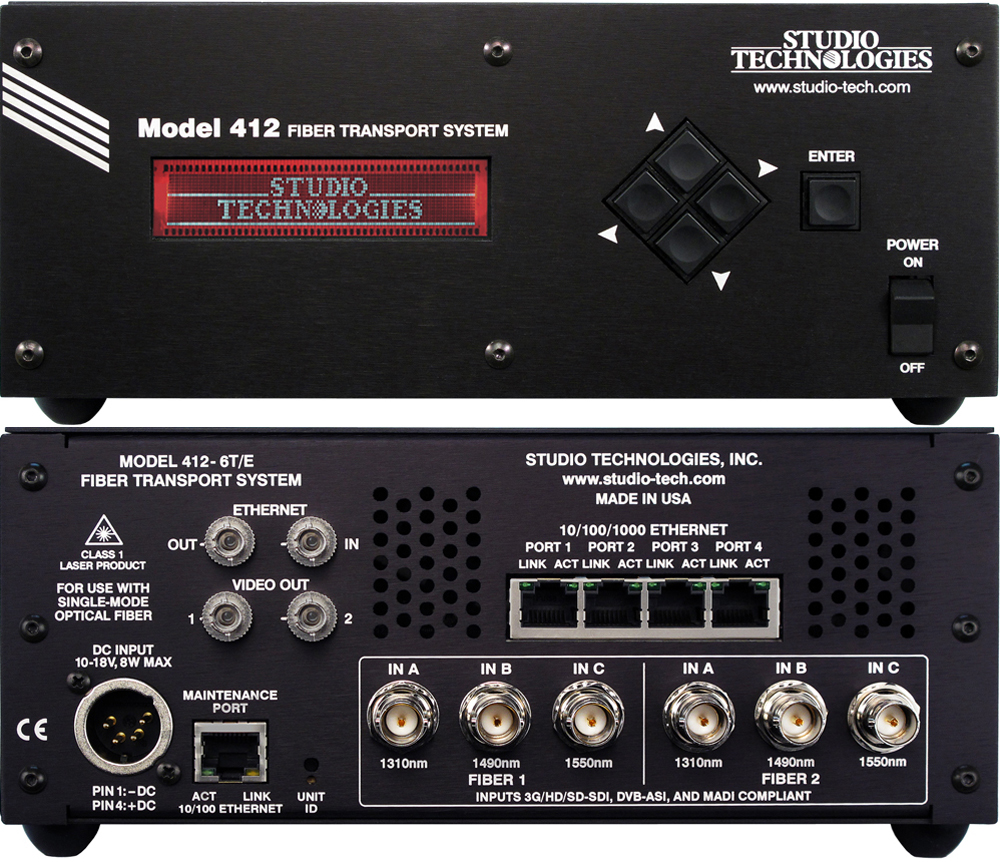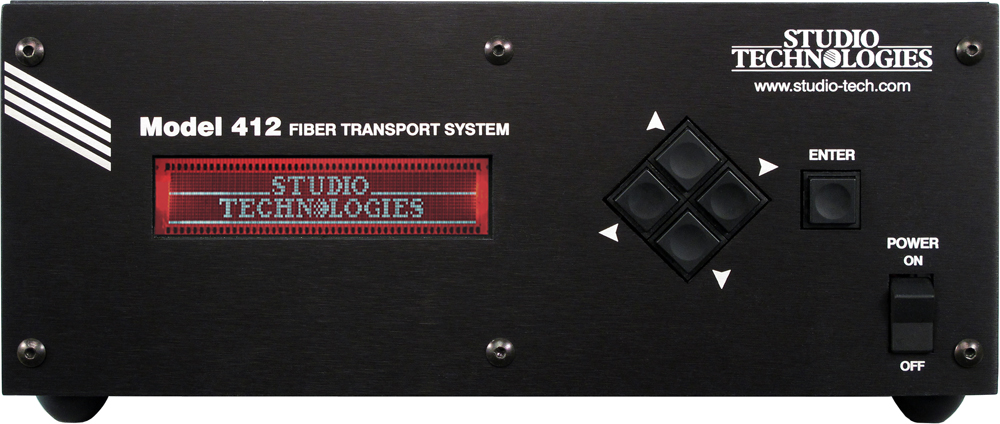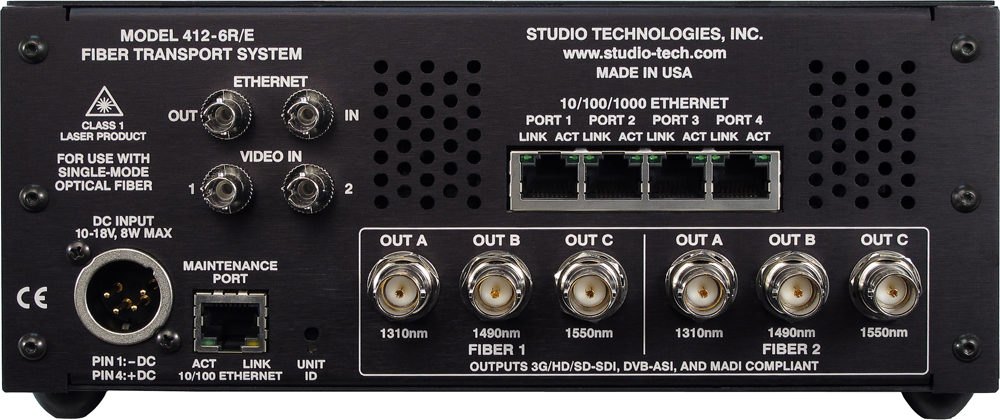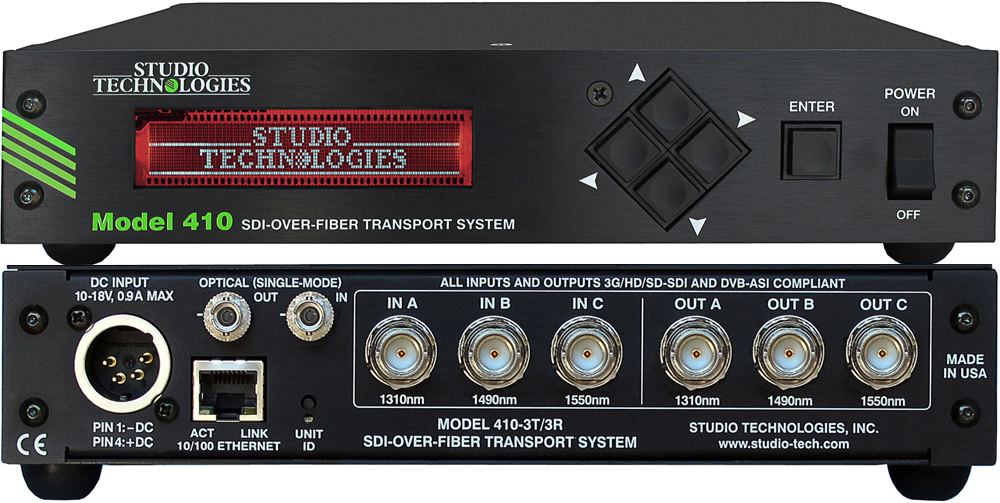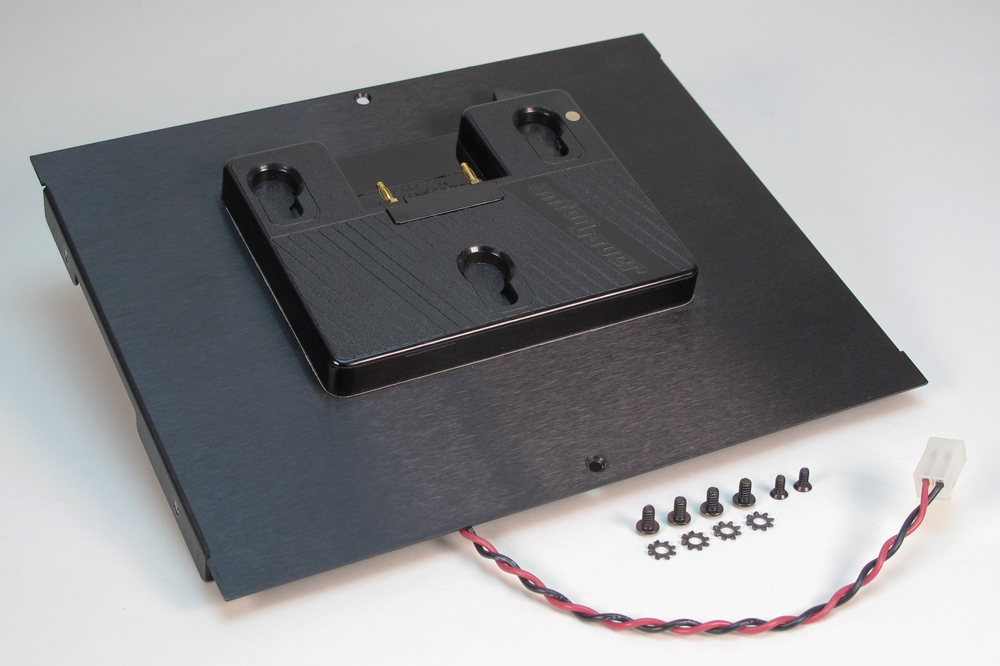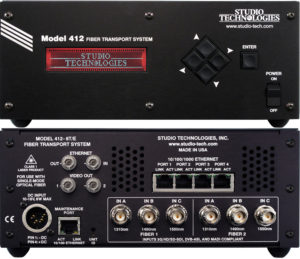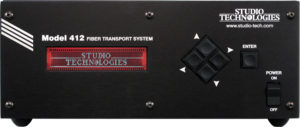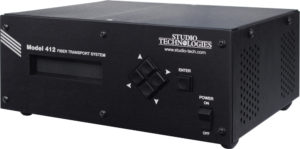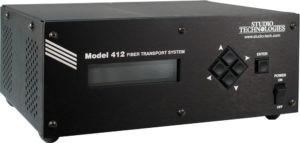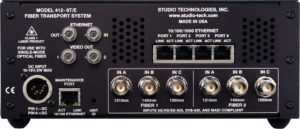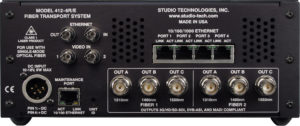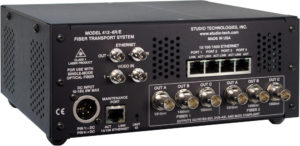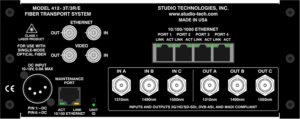The Model 412 Fiber Transport System is a half-rack, "2U" high unit that is intended for portable or fixed broadcast and related applications. Energy efficient, the Model 412 requires little power for operation and runs "cool" to the touch. Units are factory configured from among three available choices. All versions contain identical Ethernet support capabilities but differ in their SDI/MADI transport offerings. The Model 412-6T/E serves as a 6-channel electrical-to-optical (E2O) converter, allowing connection of up to six SDI or MADI signals by way of standard BNC connectors. The six channels are converted to optical and multiplexed onto two single-mode fibers; three complete SDI or MADI signals are carried per fiber. The Model 412-6R/E is a 6-channel optical-to-electrical (O2E) converter. Two optical fibers bring the multiplexed signals into the unit which converts them into six electrical SDI or MADI outputs on BNC connectors. For "transceiver" applications the Model 412-3T/3R/E provides three channels of electrical-to-optical (E2O) and three channels of optical-to-electrical (O2E) conversion. Three BNC connectors are used to interface with three SDI/MADI sources and another three BNC connectors provide the SDI/MADI outputs.
The front panel of each Model 412 version features a day/night-readable color backlit display, menu navigation buttons, and power on/off switch. The back panels include connections for DC power, four ST optical connectors, six BNC connectors for SDI/MADI signals, four RJ45 jacks associated with the Ethernet switch functions, and an RJ45 jack for connection with the Ethernet monitor interface.
Technology
The Model 412 uses a novel hardware implementation to transport three SDI or MADI signals over each of two single-mode optical fibers. The three SDI or MADI signals, at rates of up to 2.97 Gb/s, are transported over one fiber at wavelengths of 1310, 1490, and 1550 nm. In typical applications the launch power and receive sensitivity are such that signals can be transported over a minimum distance of 10 kilometers.
SDI input signals can be SD (270 Mb/s), HD (1.485 Gb/s), or 3G (2.97 Gb/s). 3G signals can be in either Level A or Level B format. DVB-ASI (270 Mb/s) signals are also compatible. To meet the needs of contemporary broadcast and production applications support for MADI digital audio signals is provided. Typical video-over-fiber products are not compatible with MADI signals as they have a unique modulation scheme and rate. Each of the Model 412's SDI/MADI channels is independent, allowing any combination of type, rate, and format to be transported.
Advanced components support the Ethernet switch and transport-over-fiber functions. Auto MDI/MDI-X and auto rate selection capability helps to ensure compatibility with virtually all twisted-pair Ethernet signals. Ethernet signals at 10, 100, and 1000 Mb/s can co-exist on the four UTP ports including support for "jumbo" frames. The media conversion process (UTP-to/from-fiber) has been tested for actual "GigE" performance with rates approaching 800 Mb/s having been measured.
Operating Power
The Model 412 is powered using an external source of 10-18 volts DC that is connected via a broadcast-standard 4-pin XLR connector. Included with each unit is a compact 100-240 volt input/12 volt DC output power supply. Optional Model 412 cover assemblies provide Anton/Bauer® QR-Gold Mount or V-Mount battery support, allowing direct attachment of broadcast-standard rechargeable batteries. With the Model 412's modest energy requirement, 7 watts maximum, one battery will typically support operation for many, many hours.
Remote Monitoring and Configuration
The Model 412 has an embedded web server that allows users to monitor system status through web-enabled devices such as a personal computers, tablets, or smartphones. System status can also be communicated over Ethernet networks using SNMP, making it possible to integrate the unit's monitoring information into a networked alarm and control software application.
The Model 412's front-panel status screen lets users or technicians observe the status of SDI/MADI input and output channels. Information provided includes optical transmit and receive levels as well as the type of signals being transported. Ethernet-related functions such as link status and optical transmit and receive power are also provided. Optical signal levels are reported directly in dBm, making it particularly useful in conjunction when remote system troubleshooting.
The embedded web server also provides a configuration menu, allowing a variety of monitoring parameters to be set. These include enabling alarms for loss of SDI/MADI inputs and outputs, low optical transmit and receive levels, and excessive temperature. Additional menu screens provide access to SNMP, network IP address, and front-panel display configurations. Advanced features include the ability to remotely update the Model 412's system firmware via an Ethernet connection to the maintenance port.
Simple Installation
While the Ethernet-accessed monitoring and configuration functions enhance the utility of the Model 412 they are not necessary for basic SDI/MADI-over-fiber and Ethernet transport operation. Model 412 units will deliver reliable, high-quality performance with no other user actions outside of making SDI/MADI, UTP (twisted-pair) Ethernet, single-mode fiber, and power connections. All back-panel connectors are clearly labeled for simple, fast, and intuitive use. And the front-panel display provides direct access to the unit's most important status information.
The Model 412 is housed in a compact, lightweight aluminum enclosure that is designed to be "road ready." It can be used in this manner as a standalone portable unit for "throw-down" applications. Two rack-mount options are also available allowing one or two units to be mounted in two spaces (2U) of a standard 19-inch rack enclosure. With the Model 412's low power consumption and passive airflow vents no special cooling methods are required.

